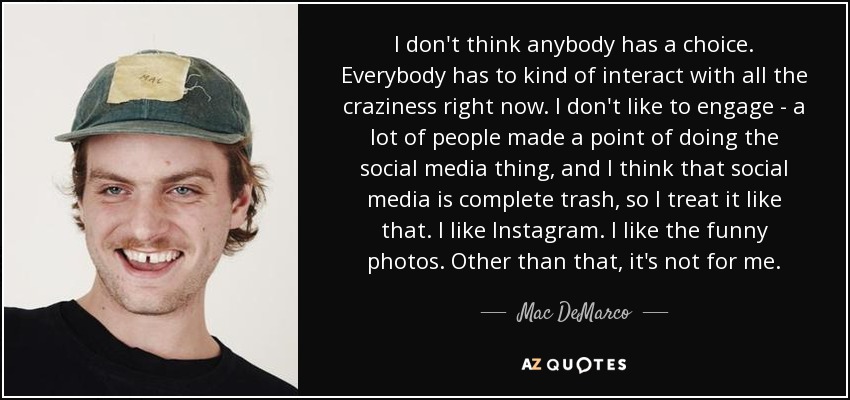
Most social media platforms have accounts you can maintain specifically for a business, where you have access to a mix of features that’s similar to but not quite the same as a personal account. For instance, a business account on Facebook will let you create events, run ads, and track analytics. You also don’t have “friends” on a Facebook business account like you do on a personal account; people simply like and/or follow your page.
Different demographics frequent different social media platforms. Therefore, it’s important to understand the general demographics of your genre—for instance, whether they skew young or old, liberal or conservative, wealthy or cash-strapped, male or female—and focus more on where those people spend their online time. For example, YA readers skew young and female, so cultivating a strong presence on Instagram may be the best use of your professional social media time.
Most social media platforms also allow you to schedule posts. This means you don’t need to rack your brain every day to come up with something interesting to post (if you have that problem). You can also rig your website to auto-post your blogs to your various social media accounts, which is useful if you do a lot of blogging (like me).
The Chalice Technique for scheduling social media posts:
Let’s say, like me, you have a hard time thinking of clever one-liners on a daily basis. Or, also like me, you’re not super into social media and don’t want to spend significant time thinking about it every day. What then?
One technique I’ve used is something I’ll call the “chalice” technique, though I didn’t invent it myself (I just can’t remember if it has an official name). This is how it works:
Step 1: Pick five or six topics to focus your social media on—for instance: family, work-in-progress, book news, what you’re reading, and pugs. These are your “chalices,” from which you pull specific things to post about. It’s similar to deciding what you’ll put in your newsletter [link]; in fact it’s good branding synergy to use the same topics! (check out my lingo speak…)

Step 2: Build a spreadsheet with all the days of the month annotated. Then decide which days will be devoted to which chalice, taking care to spread out the chalices evenly; specifically, don’t overdo it with the book news. A quick way to lose followers is to stuff your feed with ads. I recommend planning to post every two to three days, to leave room for spontaneous posts if the mood strikes you.
Step 3: Write specific posts for those days. Try to keep it short, like one or two sentences—ideal for scrolling. Include pics when you can, cuz people like pics. Some posts can be only pics or videos, like a funny meme or whatever.

Step 4: Copy and paste the post into your social media platform of choice, then schedule it for the day you annotated in your spreadsheet. Done!
Step 5: Sit back and relax until the next month (or two weeks, or however far out you schedule your posts).
And there you go! Now all you need to do is spend maybe an hour or less a month on coming up with content all at once, rather than racking your brain for something to post every day.
…
Now at this point, let me say I’m absolutely not the authority on social media. I suck pretty hard at it, and only spend slightly more time than your average grandma scrolling through my feeds. I might not have checked my Twitter or Instagram accounts in over a year. I glance through Facebook once every couple weeks or so. My introverted husband keeps up more with social media than I do. (I do, however, keep up a lot with the news, but I go to actual news sites for that.)
Therefore, I don’t have a lot of super-insightful advice to give about social media. I will, however, say this critical thing about social media and your author career:
High social media engagement is the result of a book’s success, not the cause of success.
Like with everything, there are some exceptions—in this case, mostly non-fiction stuff, and of that mostly mommy bloggers from the early 2010’s (i.e. early adopters) who racked up a significant following before everybody else got on board. But that ship has sailed so you won’t be one of them, especially with fiction…unless you do something fun with food, maybe turn that into a cookbook…weird cookbooks are hot right now.
The point is, setting up social media accounts for your author business is a good idea simply because it’s a free and mostly passive resource for marketing. But don’t put a lot of time and energy into posting content and updates unless it’s something you genuinely enjoy doing. Social media is an arm of marketing, and like I said in my marketing post, it’s better for your mental health to prioritize the things you enjoy while minimizing the things you don’t enjoy…especially when the financial result of torturing yourself versus not torturing yourself is the same.
The chalice technique I just described above? Other authors swear by it, but I gave up on it after a couple months because even that was too much effort for something I didn’t enjoy doing.
The moral of the story is this: if you like social media, then do that. If you don’t like it, then don’t do it, or keep it to a minimum. Either way, your social media presence isn’t going to make or break your career. Eventually the next shiny thing will come along and everyone will swear you need to be ON IT LIKE YESTERDAY, but all you really need to do as an author is write a good book. And then write another, and another. Everything else is secondary.
